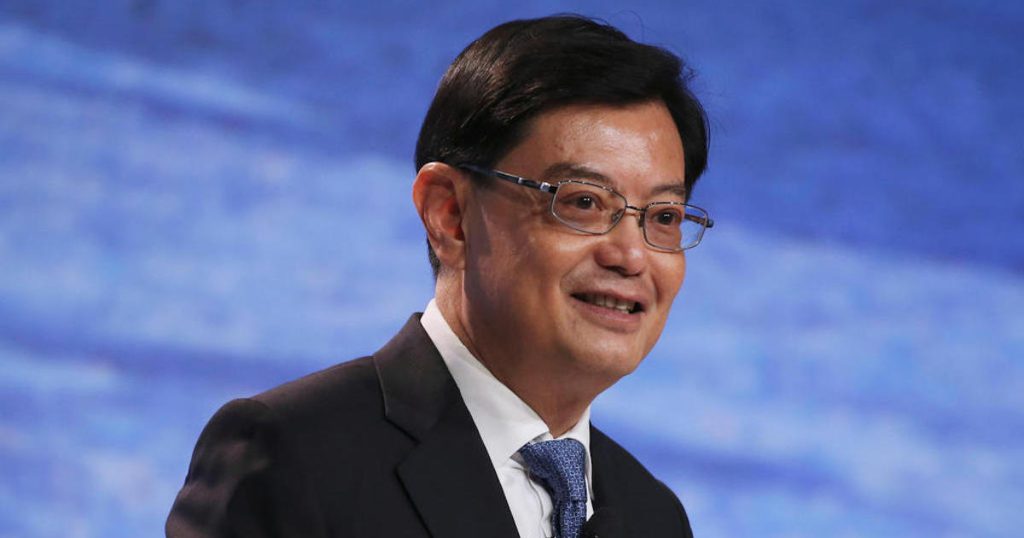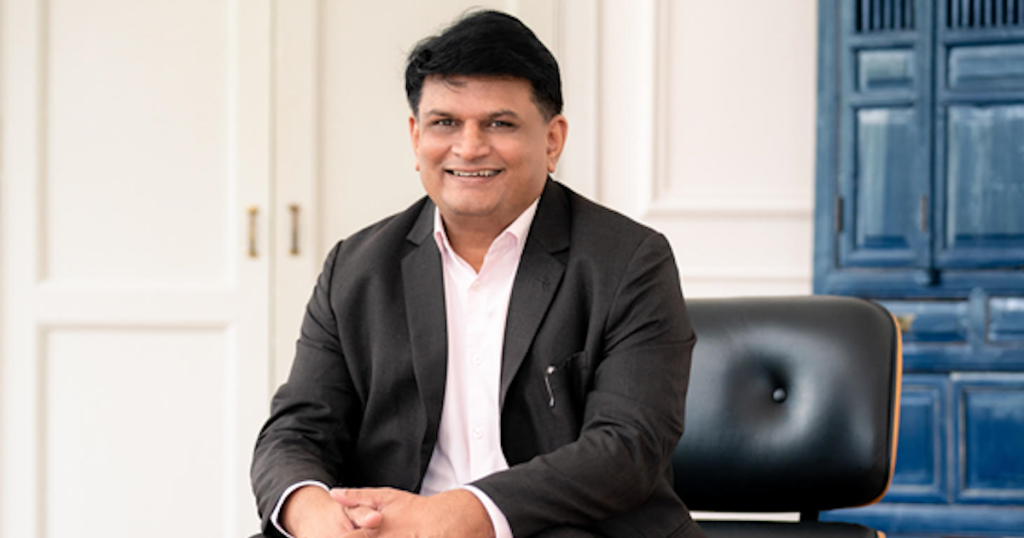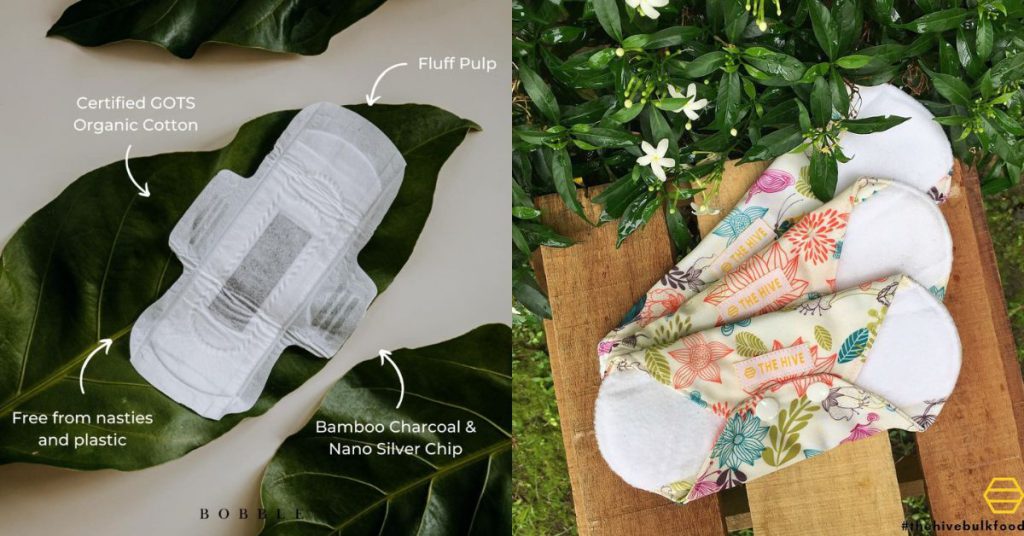S’poreans least optimistic about retiring early, among others in Southeast Asia

The pandemic has forced people around the world to rethink their retirement plans. Owing to trends such as digitalisation and a change in employee attitudes, the job market was forever altered. Now, with the horizon showing signs of a global recession, it seems as if the worst is yet to come.
Over the past year, Singaporeans have been putting more thought into their future. In a survey by Fullerton Fund Management, it was revealed that 42 per cent of locals in their 30s viewed the pandemic as a key trigger, causing them to re-evaluate their attitude on retirement.
The importance of being financially prepared has become readily apparent, and many believe that a traditional source of retirement income — such as the Central Provident Fund (CPF) — is no longer enough.
A majority of Singaporeans between the ages of 21 and 40 now expect that most of their retirement income will come through investment returns. In light of this, the average risk tolerance levels have also been evolving.
Among the younger population, more have become willing to forgo guaranteed capital in favour of higher speculative returns.
Singapore vs. SEA: Investment choices
In June 2022, Milieu Insight released data surveying people across Southeast Asia about the Financial Independence, Retire Early (FIRE) movement.
Introduced in the 1990s by writer Vicki Robin and financial analyst Joe Dominguez, FIRE is a movement dedicated to living below one’s means and investing more — all to fund an early retirement.
On the topic of investing, the survey revealed that Singaporeans viewed investment funds, real estate, and gold as the most desirable options. That said, the rising propensity for risk was also showcased — a quarter of local respondents planned to invest in cryptocurrencies, and over half planned to buy stocks.

Although this is a significant proportion, Singapore placed well below the Southeast Asian average for each of these categories.
In comparison to those in neighbouring countries, Singaporeans take a risk-averse approach to investing. While this might boil down to a difference in mentality, other factors could also play a role. For example, the ease of access to financial instruments.
In countries such as Indonesia and the Philippines, over half of the population is unbanked. In Singapore, this figure is less than two per cent. Investments such as cryptocurrencies might prove more attractive for those who can’t participate in traditional finance.
Are Singaporeans confident about retiring early?
Among the countries surveyed, Singapore had the lowest proportion of respondents who claimed that they were on track to retire early. Over 50 per cent said that they planned to do so, but didn’t find it likely to happen.
When comparing the steps being taken towards retirement, Singaporeans were less likely to do financial planning or take on a second job for additional income.

On the other hand, they expressed more interest in investing in insurance plans and taking advantage of credit card points programs. The latter might be yet another implication of having easy access to traditional finance in the country.
When asked about the lifestyle they would lead in retirement, less than a quarter of Singaporeans believed that they wouldn’t have to alter their standard of living. Most envisioned a more minimalist lifestyle, sustained through a combination of savings and part-time work.
How much do Singaporeans save?
Given the pessimism around early retirement, it’s surprising to see that Singaporeans save the highest proportion of their income among those around Southeast Asia.
Three out of 10 Singaporeans save over 30 per cent of their income, as compared to an average of two out of 10 for the rest of Southeast Asia. This doesn’t include the amount which is further used for investments or insurance.
The difference in cost of living between Singapore and other Southeast Asian countries adds some context around this discrepancy.
When accounting for factors such as average income and living expenses, Singapore ranks among the 10 most expensive countries to live in. Indonesia and the Philippines barely make the top 100.
As such, Singaporeans need to save more than their Southeast Asian counterparts to be able to retire and continue living in the country.
Resigning or retiring?
Among these concerns about retirement, Singaporeans face a challenging dilemma: to work at jobs they dislike, or continue working into their older years.
In April 2022, Prudential Singapore commissioned a poll surveying the impact of the ‘Great Resignation’ on retirement planning.
The respondents comprised residents who had recently left their jobs or were actively thinking of doing so. One in five of them believed that such a decision would push their retirement back by six years.
Asked about the reasons why they wanted to leave, half the respondents said that they no longer felt engaged at work. Others expressed concerns about mental health and toxic work environments.
Regardless of the decision employees make, it’ll certainly leave something to be desired.
Also Read: S’pore sees a serious talent crunch – jobs remain unfilled despite 120% increase in listings
DPM Heng on the future of crypto and fintech in S’pore: public-private cooperation is needed

Deputy Prime Minister and Coordinating Minister for Economic Policies Heng Swee Keat gave the opening address at the Point Zero Forum in Zurich, Switzerland today (June 22).
The forum is an exclusive gathering of global leaders, founders and investors, and is jointly organised by Singapore and Switzerland. Notable speakers at the event include regulators, startup leaders, and many more.
During his opening speech, DPM Heng noted several important trends in the fintech and crypto space.
A new wave of tech is here
While DPM Heng noted that the new wave of technology — in the form of Web3.0, blockchain, non-fungible tokens (NFTs) and decentralised autonomous organisations (DAOs) — is here, it is also the case in which the previous wave of tech has not yet run its course.
“Artificial intelligence (AI), Internet of Technology (IOT) and big data have become more prevalent, but there are still untapped opportunities. A new wave of technology is emerging in the form of Web 3.0, blockchain, NFT, and DAO — these technologies are not as well understood or defined, but they could potentially be game changing,” he said.
DPM Heng also expressed his hope that the Point Zero Forum could be a place where both the public and private sector jointly seeks to strengthen the circulation of innovation, broaden opportunities between Europe and Asia, and use these emerging technologies for good.
He suggested that the regulatory approach that Singapore has taken is likely going to be adapted to these new technologies, citing successes with the previous tech waves of AI and machine learning.
Each new tech wave is often greeted with a mix of optimism and skepticism. What we have gradually come to accept today, was not as broadly embraced back then, but we did not let tech evolve by chance.
Instead, the tech community and regulators actively shaped technology to bring out its best potential, while mitigating the risks. The same approach of encouraging the upsides while minimising the downsides applies to Web3.0, which creates many possibilities.
– DPM Heng Swee Keat
Addressing the recent volatility of crypto prices and high profile failure of the Terra UST-Luna project, DPM Heng also argued that the value of blockchain and digital assets lies aside from crypto assets, and suggests that blockchain tech can be used for cross-border transactions.
We can also explore other use cases to improve efficiencies, accessibility, and affordability.
The fintech community faces challenges, but also has many opportunities
One of the main points that DPM Heng addressed was on the state of the fintech industry.
He noted that access to capital has become more difficult with rising interest rates and falling valuations, as well as a general increase in scepticism following the failure of several high profile crypto companies.
There is also geopolitical instability and macroeconomic challenges, all of which pose significant issues to the development of the fintech industry.
However, DPM Heng also considers the growth of the fintech industry so far to be strong, with a record of over US$210 billion being invested into fintech last year.

Fintech has improved counteless lives, including bridging digital finance to millions who were otherwise unbanked. Fintech is driving better outcomes — disrupting existing business models for the better, creating good jobs, and steering us towards a greener future.
– DPM Heng Swee Keat
At the same time, he cautioned that there are also significant issues that the fintech industry has to deal with, with greenwashing being a prominent issue. Citing the recent move by Morningstar to remove ESG tags from around 20 per cent of their funds, DPM Heng stated that the magnitude of greenwashing is concerning, and called the practice “the bane of global financial systems”.
According to DPM Heng, this also happens to be an area where green fintech can be put to greater use in order to detect greenwashing and raise the quality of green financing over time.
Regulators are not enemies of businesses
DPM Heng also stressed that regulators and businesses share a common goal in using finance and tech to create value and improve lives. As such, there is no need for regulators and businesses to take an adversarial approach.
Instead, DPM Heng advocates for a partnership between the private and public sector, in order to encourage and promote innovation while managing the downside risks. As an example, DPM Heng cited the importance of the private sector and government’s common interest in getting rid of greenwashing.
“Singapore remains keen to work with blockchain and digital asset players. We are committed to partner innovative and responsible players to grow the Web3.0 ecosystem and community in Singapore,” he said.
“We will facilitate live experiments through regulatory sandboxes, including testing the feasibility of DeFi and asset tokenisation. We hope to do pioneering work in these fields, in a way that will benefit lives and our regions. We welcome you to be part of this journey, as we strengthen the partnership between regulator and industry.”
Featured Image Credit: Reuters
Also Read: Not the first or last: Why crypto lender Celsius is crashing and what can we learn from it?
MAS grants in-principle approvals to another three crypto firms: Crypto.com, Genesis, Sparrow

Crypto.com announced today (June 22) that it has been granted approval from the Monetary Authority of Singapore (MAS) for its Major Payment Institution License.
This means that the cryptocurrency platform will now be able to offer a range of payment services to Singapore customers that comply with the Payment Services Act, such as Digital Payment Token (DPT) services.
The Monetary Authority of Singapore sets a high regulatory bar that cultivates innovation while protecting consumers, and their in-principle approval of our application reflects the trusted and secure platform we have worked diligently to build.
– Kris Marszalek, co-founder and CEO of Crypto.com

Kris also highlights that they look forward to working with MAS and strengthening their roots in Singapore, which he describes as “a flourishing market for fintech innovation, renowned for its well-regulated business environment.”
Crypto.com, with more than 50 million users globally, will continue to expand and grow its ecosystem. This news follows the recent provisional approval of its Virtual Asset MVP License from the Dubai Virtual Assets Regulatory Authority (VARA), and the company plans to launch its cryptocurrency exchange service in Dubai.
MAS has granted approvals to 14 companies
Besides Crypto.com, the MAS has also granted approvals to Genesis and Sparrow, bringing the total number of licenses and in-principle approvals granted in the last two years to 14. These include companies like FOMO Pay, Triple A, DBS Vickers, Revolut, Luno and more.
Genesis launched the first US OTC bitcoin trading desk in 2013 and has been growing to facilitate billions of people in their monthly digital currency trades, loans and transactions. On top of that, they provide access to deep pools of global liquidity throughout the digital asset ecosystem.
Meanwhile, Sparrow offers digital asset products and solutions. It focuses on establishing an options trading platform that aims to be secure, compliant and intuitive for individual subscribers.
They also work with financial institutions and family offices in designing bespoke digital asset solutions to achieve customer-centric growth objectives, without compromising on financial reporting and compliance requirements.
Headquarted in Singapore, they are supported by known investors in the digital assets space and work with financial institutions and wealth managers.
In an inaugural Point Zero forum held in Zurich, Switzerland today, Deputy Prime Minister Heng Swee Keat asserted that “Singapore remains keen to work with blockchain and digital asset players”.
He adds that the nation remains committed to joining hands with innovative and responsible players to grow the Web 3.0 ecosystem and community.
Featured Image Credit: Forkast News
Also read: Bybit CEO cites company growth concerns, expected to lay off up to 30% global
Robot server to “digital salesman”: How this S’porean grew a canteen stall into a F&B tech empire

13 years ago, Neelendra Jain was running a vegetarian Indian stall at Singapore Management University (SMU).
Business was decent, but Neelendra wanted more. The very next year, he managed to open another store called Namastey India, and this was followed by several more stores in the next few years.
By 2017, Neelendra’s portfolio of businesses had grown to an impressive size — he owns a successful restaurant chain with multiple outlets in Singapore called Cali, and several other stalls and restaurants.
This was quite the transformation. How did one man build an empire out of a single store in a school canteen? The answer, according to Neelendra, lies not just in adopting technology — but also finding out what technology is best suited to the business.
Why are they banking on technology?
As the owner of several food and beverage (F&B) outlets in Singapore, Neelendra experienced first-hand the difficulties of managing the multiple aspects of running such a business: incorporating customer feedback, improving sales, and many more.
As such, Neelendra came to understand the necessity of finding solutions to these problems, and realised that F&B tech could be a valuable asset to have.
Growing out of the SMU canteen space to six restaurants in Singapore, we believe that the right integration of technology is a must for the business to grow in Singapore’s business landscape. Our tremendous growth in Singapore can be attributed to that exact reason.
Currently, the types of equipment and systems developed and often not suitable for F&B players in the market, since it is also developed by non-F&B players. As such, we have started to use our F&B business as a testbed to develop solutions that would increase the productivity and profitability of our business.
– Neelendra Jain, founder and CEO of NJ Group
Some of the innovations that Neelendra has managed to develop for his own restaurants include COBIE, which is a robot that helps restaurants serve food.

Additionally, Neelendra’s restaurants have also implemented Eagle, which is an AI-powered feedback system that takes into account real time comments from customers and generates suggestions on how to improve the business.
“Understanding feedback, analysing, and coming up with a reaction can be time-consuming and require manpower. Eagle is resolving this, and it’s being used in all Cali restaurants now”, he explained. Cali is the flagship brand of Neelendra’s NJ Group, and currently has four outlets in Singapore.

Additionally, NJ Group has also developed the world’s first baked pasta quick service restaurant, known as Zitimama. While this in itself may not seem like a huge deal, it’s in how they sell their products that makes a difference — Zitimama utilises a “digital salesman” that customers order from.
Clarity informs quality
Of course, with so many areas where technology could help in the F&B business, how did Neelendra manage to pick the technologies that made sense for his restaurants?
For one, he doesn’t just implement solutions on a whim. The technologies that NJ Group adopts and develops are intended for specific purposes.

We are trying to fill the current gaps in the F&B industry with our innovative technologies, helping to improve service quality and aid the manpower crunch. Most importantly, we are trying to incorporate our solutions to each of our innovations to the problems we have uncovered in the industry in order to resolve real-time complications.
The vision behind this is to enhance user experience, but without burdening our team members or interface with additional challenges such as technical jargon or complex technology.
– Neelendra Jain, founder and CEO of NJ Group
Any technological improvements are presented to staff, who are then given a demonstration and asked for feedback.
“The staff enjoy being able to test the prototypes, and see the results firsthand. They also like to see the happiness of clients and the growth of the business. Often, there is room to improve, and as such, we develop the overall solution in phases,” added Neelendra.
“This lets us save time and enable our users to familiarise themselves with the technology, which comes with fewer hassles. The key is to keep monitoring and enhancing the solutions developed to reach an upgraded result.”
In addition, the recent Covid-19 pandemic also provided NJ Group with a new direction for expansion.
The Group actually leveraged the time during the pandemic to identify problems within their business and implement new solutions. Many of the aforementioned innovations were actually introduced during the pandemic itself, including the AI-powered feedback and solution generator Eagle.
F&B outlets of the future?
For all the technological development and innovation that NJ Group offers, Neelendra still believes that the core of the F&B business requires a human touch.
The human touch still takes up a big majority of F&B’s hospitality and business. Technology simply amplifies the service and makes it better. I personally feel like technology in the service industry is like the amount of salt that we add to our food — slightly too much, or too little, will impact the whole flavour of the meal.
– Neelendra Jain, founder and CEO of NJ Group
As such, while NJ Group will continue to search for problems in the F&B sector that technology can ameliorate, they have been careful not to lose sight of the forest for the trees.
They are also hoping to licence their F&B tech out to other businesses who also wish to integrate technology into their business.
“Our long-term goal would be to shake the industry with our groundbreaking innovations and create a global presence with our reliable products.”
While the F&B industry has so far mostly treated technological integration as an option, Neelendra has instead embraced it fully — finding various ways to make F&B tech a key pillar of his business empire.
At the same time, however, he has also understood that change is not always an unmitigated good, and has been careful to involve his staff in the implementation of his plans. As such, technological innovation has not been brought about at the expense of employees, but rather, in cooperation with these employees.
Featured Image Credit: NJ Group
Also Read: How this S’pore startup is competing with food delivery giants and championing users, hawkers
Bybit CEO cites company growth concerns, expected to lay off up to 30% global headcount

Crypto exchange Bybit revealed this week in an internal letter that it will reduce its headcount.
In the letter, founder and CEO Ben Zhou wrote that while the organisation’s size had grown exponentially, business growth has not grown in the same way. As such, operational efficiency has decreased despite the company’s growing size.
The headcount reduction is targeted at removing overlapping functions and building smaller but more agile teams to improve efficiency, and the company will review functions and roles for combination or adjustment.

Starting from this week, some of the functions and roles will be reviewed for combination or adjustment. This is to ensure us (to stay) focused, stay agile and execute faster.
This will affect some of the existing team members unavoidably. It is one of the toughest decisions I have ever had to make in my life, to have to part with great team members who we value and love.
– Ben Zhou, founder and CEO of Bybit
He also assured employees that Bybit will offer severance packages and help them thorough the Employee Assistance Program.
According to Wu Blockchain, around 20 to 30 per cent of employees are expected to be laid off.
This follows a period of rapid organisation expansion, where Bybit has expanded from hundred of employees to over 2,000 within two years.
The Dubai-based crypto exchange claims more than five million users a month, and has presence in 160 countries. The company also signed a US$150 million sponsorship deal with F1 team Red Bull Racing last year.
Bybit spokespersons have also defended the move, pointing to a need to reduce costs as a result of the bear market that is currently present in the crypto ecosystem.
Other crypto companies have also stated that they are reducing their workforce, with Coinbase cutting their workforce by 18 per cent, Crypto.com by five per cent, BlockFi by 20 percent, and Gemini by 10 per cent.
Featured Image Credit: Mr Backwards via Medium
Also Read: Great Resignation to Great Layoffs: Does the recent tech layoffs signal an industry downturn?
S’pore blockchain-based telco Gorilla Networks on building a metaverse post-acquisition

In the modern day, mobile data is almost a necessity for consumers as phones become a ubiquitous part of our lives.
In response, many telcos in Singapore have begun offering larger packets of data in their mobile plan offerings to cater to data-heavy users. Gone are the days where data offerings were denominated in megabytes; now they are listed in gigabytes, which is a testament to the importance of mobile data for consumers.
But as competition for how much data consumers get became stale, one particular telco began offering consumers the option of doing something different with their data.
Founded in 2019, Gorilla Networks married two concepts that seemed to have nothing to do with each other: mobile data and cryptocurrency.
Founder and CEO Xanne Leo was inspired by how mobile plans in Singapore were inflexible, requiring users to accurately predict their monthly usage and data consumption.
She resolved to have her telco offer users a new type of mobile plan — one that would allow users to pay only for what they used, and convert the rest into digital assets like cryptocurrency and NFTs.
Globalising offerings

Recently, Gorilla Networks has been acquired by New York Stock Exchange-listed Society Pass (SoPa), a Vietnamese loyalty and data-focused marketing platform in Southeast Asia and South Asia.
Our proprietary blockchain technology aligns well with SoPa’s acquisition strategy. As we work in tandem with Society Pass to incorporate Gorilla’s blockchain and Web3 capabilities, we aim to enable a new meta economy for our users, alongside SoPa’s portfolio companies.
– Xanne Leo, founder and CEO of Gorilla Networks
This acquisition is intended to leverage SoPa’s existing platform and connections, and enable Gorilla Networks to expand their customer base into regions where SoPa is active.
According to Gorilla Networks, it plans to expand their user base into Vietnam, Thailand, and Malaysia within the next 12 months.
“We chose these countries in view of SoPa’s extensive ecosystem and large user base in SEA. In addition, SoPa operates Leflair.com, Vietnam’s leading lifestyle e-commerce platform; Pushkart.ph, a popular grocery delivery company in Philippines; and Handycart.vn, a leading online restaurant delivery service based in Hanoi, Vietnam,” she explained.
“By joining forces with SoPa’s in these regions, Gorilla is thrilled about the combined marketing capabilities we will now bring collectively to our partners and customers. Through Gorilla’s cutting-edge technology, we seek to tailor for an unprecedented experience for the next generation of customers in SEA and to enable a new meta economy for our users.”
In addition, Gorilla’s ambitions go beyond just engaging more customers in the region. They are building themselves to become a Global Metaverse Connectivity Operator, meaning that they aim to onboard traditional telcos into the metaverse, through their established Web3 ecosystem.
Moving the telco ecosystem into Web3
Gorilla Networks has already proven their concept in its Web3 telecommunications capabilities with GSIM, which functions as an eSIM preloaded with roaming mobile data.
Their upcoming offering, the GLVT NFT, will act as Gorilla’s membership NFT and introduce what Web3 has to offer for those still on Web2 networks.
Gorilla Networks also has plans to introduce GMobile NFTs, as well as SIMs, mobile data plans and NFTs. These will function as Gorilla’s on-chain connectivity objects to provide owners access to mobile data across the globe. Users will also be able to top up their mobile data to GMobile NFT, transfer the NFT to another wallet, and reissue new SIMs when needed.
Telecommunication companies have always been centralised, walled gardens where users do not have seamless access to essential telecommunication services worldwide.
Users do not normally associate possession of SIMs, phone numbers, talktime, SMS, mobile data and other network services with true ownership in the sense of freedom to trade or transfer.
– Xanne Leo, founder and CEO of Gorilla Networks
As such, Gorilla Network’s goal is to innovate and improve on what consumers generally think of when they consider telcos. She wants to allow them to appreciate that they truly own their phone number, and make it a point that SIMs and NFTs are really just an extension of their identities.
At the same time, Gorilla Network is also conscious of their customers’ needs for privacy when entering the NFT space, and is planning to operate a Web3-native on-chain verification vouch with an off-chain trusted verification bridge. This would enable customers to be verified while keeping their on-chain identity private to other users.
While Gorilla Network has already made its mark in Singapore with its innovative approach to mobile data plans, it seems that the company is not yet prepared to simply hold the position it has.
Gorilla Network has leveraged its reputation and technology, and can now aspire to be something greater than a local telco as it brings NFTs and the metaverse to ordinary customers not just in Singapore, but throughout the region.
Featured Image Credit: Gorilla Networks
Also Read: New S’pore MVNO Gorilla Mobile lets you turn unused mobile data into digital crypto tokens
Features of Sony’s WH-1000XM5 noise-cancelling headphones that make them worth the upgrade

TLDR: Full video explainer available below!
Sony’s latest flagship noise-canceling headphones, the Sony WH-1000XM5, feature a pretty big overhaul in their design. While they’re arguably more visually appealing, are they really worth the upgrade?
To answer this, we not only looked into their new features, but also put them to the test ourselves with the help of some vacuum action. Here’s what we learnt.
Even more noise-cancelling than the last
With two processors and eight microphones, this pair of Sony headphones come with four beamforming microphones with AI-based noise reduction.
Beamforming microphones are designed to locate and track the user’s voice and reduce background noise during phone calls.
We tried using the microphones while someone else was vacuuming in the office, and you can check out the results in the video below.
Made with recycled materials
In line with Sony’s Green Management 2025 environmental target, the WH-1000XM5 is made out of recycled plastic materials from automobile parts.
This is actually the same material found in the Sony LinkBuds, which we’ve tried out too.
Speaking of materials, the headband and ear cups have a distinctive memory foam-like feel for that added comfort.
Same battery life, but speedier charging
Although the Sony WH-1000XM5 shares the same 30-hour battery life as its predecessor, it boasts a quicker charge.
A three-minute charge will give you three hours of usage with this pair of headphones. This is faster in comparison to the XM4 pair, which required a 10-minute charge for five hours of usage.
Despite all these pros though, there’s one con for those who are frequent travellers:
Non-collapsible nature may be inconvenient
Unlike the previous model, these headphones are actually not collapsible or foldable, though both ear cups can pivot and turn. This means their case is pretty big, about twice the size compared to the previous version.
In terms of efficient storage, however, the new case has a compartment, accessible through a magnetic flap, that stores the cables and any other small accessories.
What we’ve mentioned are just a few of the various features found in the Sony XM5 headphones. To fully see the Sony WH-1000XM5 in action, check out the video below:
Also Read: With 350+ cryptocurrencies available on Poloniex, here are 3 features it brings to the scene
This M’sian left architecture for illustration, now her portfolio includes Samsung & Celcom

In some ways, Kirin Sharom’s life reminds me of my own. Just like her father, my father was an architect too. The only difference is Kirin’s father used to bring her to his office frequently, whereas my father only took me twice to his office.
It was thanks to these frequent visits that she eventually picked up art and design skills. Her father’s office became her playground for experimentation and learning new skills with the help of her father and his colleagues.
Thus, it wasn’t a huge surprise when Kirin decided to pursue architecture. After finishing her SPM, she did her undergraduate studies in architecture at the University of Malaya (UM).
Upon graduation, she worked as an assistant architect and was a part-time lecturer at UM for two years before she headed to the Institute of Technology, Bandung, Indonesia (ITB), for her postgraduate studies.
Once she had a Masters in Architecture, Kirin took a year off to venture out and explore her career options. During that time, she joined a few architectural competitions, and conducted a few graphic design freelance projects.
Through her freelance projects, Kirin discovered her passion for graphic design, and lo and behold, Bunga dan Bintang was birthed.

From architecture to digital illustration
Bunga dan Bintang was established in February 2019, starting out on Instagram as a business account.
“I did miss the security that a stable income could provide during the first six months of building Bunga dan Bintang. However, I loved working on my own more as I had the flexibility and the freedom to do whatever I wanted,” shared Kirin.
Kirin’s childhood was filled with a passion to draw and paint. However, she only properly learnt the skill of drawing digitally at the age of 27, in 2018.

Currently, Kirin operates Bunga dan Bintang on a full-time basis. She usually spends about four to five hours per day and about four to five days a week on her startup.
Initially, when the brand was newly launched, Kirin used to overwork and accept every job opportunity that approached her. Eventually, she burnt out and fell sick frequently.
“Since then, I’ve changed my strategy. I now accept one to two projects every month, and occasionally hire my sister to work part-time, if I need the extra help,” shared Kirin.
Small brand, big clients
Bunga dan Bintang’s artworks are simplistic in nature, with inspiration drawn from Kirin’s own daily life. For example, her cat, her mum’s plants, flowers, and festive events like Hari Raya are just some of her muses.

But her production process doesn’t just stop at illustrating, there’s also printing to consider, in order to get her artworks to her end consumers.
“I live in Negeri Sembilan and it is very hard for me to source the printing and manufacturers for my products, especially when I want to produce them in small quantities,” said Kirin.
Hence, Kirin arranges for her artworks to be manufactured overseas. According to her, working with international manufacturers is quite tough.
Before preparing her artworks, Kirin sources international manufacturing companies and asks them for material samples and colour match books, or charts.
With the R&D process involving sourcing international manufacturers, obtaining the right materials, and printing colours, producing the artwork can take anywhere from one week or even up to a year.

Kirin’s work does not go underappreciated though. Bunga dan Bintang has collaborated with various local clients such as Urbanscapes, Samsung, Celcom, and Yeo’s to provide illustrations for them.
Recently, Bunga dan Bintang collaborated with Poplook, a fashion label to design artworks for their free gift sets during their Poplook 2022 Raya Campaign.
Beyond local shores, Bunga dan Bintang has reached international clients too; Kirin once collaborated with a pottery brand in Qatar to produce artworks for their pottery, fabric, and packaging.
Now, Bunga dan Bintang is also part of the NFT community, minting some art on
- Learn more about Bunga dan Bintang here.
- Read other articles we’ve written about Malaysian startups here.
Also Read: Almost 7 out of 10 Malaysians are not cleaning their beds properly. This is why you have to.
Featured Image Credit: Bunga dan Bintang
9 M’sian brands offering eco-friendlier sanitary pad alternatives that suit sensitive skin

It’s been a known fact that conventional sanitary pads can contain harmful chemicals which may lead to irritation, eczema, or diaper rash for menstruators.
To curb this, some switch to menstrual cups, and there are many available in the Malaysian market, as our separate listicle here has shown.
But maybe the thought of menstrual cups scares you, or you’ve given them a go and found that they just aren’t a good fit.
The good news is that there is a growing market for alternative pads offering a better and safer way of going about your flow. Here’s a non-exhaustive list of Malaysian companies catering to that need, which we’ve categorised into disposable and reusable sanitary pads.
Disposable organic cotton sanitary pads
1. Amez
Amez’s pads use a specially-created jelly with nine absorbent and protective layers for its day and nighttime pads. With it, the pads are said to have a stronger level of absorption.
Furthermore, the sanitary pads are infused with herbal ingredients including tea plant, chamomile, lavender, aloe vera, and peppermint to keep wearers fresh and comfortable during their periods.
With nano silver, far infrared, and negative ion tech, Amez claims its pads can also kill harmful bacteria, help improve blood circulation, promote body metabolism, and soothe menstrual pains.

Sizes:
- Pantyliners: 16cm;
- Day pads: 24cm;
- Night pads: 29cm;
- Long night pads: 36cm.
Price:
- Pantyliners: RM13.90 (30 pcs/pack);
- Day use: RM14.90 (12 pcs/pack);
- Night use: RM14.90 (10 pcs/pack);
- Long night: RM14.90 (8 pcs/pack).
Free deliveries are available for orders over RM100 to Peninsular and East Malaysia.
Where to buy: Get it on their website.
Contact: Reach them on Facebook or Instagram.
2. Bieu
Bieu claims to use the finest organic cotton on the layer of the pads and liners that touches the skin. Using air-through technology, the pads are gentle for even sensitive skin types that are prone to allergies, keeping your intimate area safe.
The pads are chlorine and fragrance-free, and have a quick absorbent core, as well as leak-locker technology to prevent side leakage.

Sizes:
- Pantyliners: 18cm;
- Day pads: 24cm;
- Night pads: 33cm.
Price:
- Pantyliners: RM12.90 (26 pcs/pack);
- Day use: RM15.90 (16 pcs/pack);
- Night use: RM15.90 (12 pcs/pack).
Free deliveries are available for orders over RM50 to Peninsular Malaysia, and RM70 to East Malaysia.
Where to buy: Get it on their website or at KPJ Healthshoppe outlets and JX Pharmacy stores.
Contact: Reach them on Facebook or Instagram.
3. BioFree
BioFree’s Organic Cotton Disposable Pads are stated to be skin-friendly to consumers and bio-degradable as well.
BioFree’s ultra-thin (0.2cm) design has leak-proof wings and a strong bio-adhesive to hold the pad in place. These features claim to provide the wearer with maximum comfort and safety specifically because the organic cotton used is grown pesticide-free.
BioFree was featured on our menstrual cups listicle as well, and the brand also carries period panties for RM108/pc that can be worn for up to six hours during your flow.

Sizes:
- Pantyliners (L): 18cm;
- Day use (XL): 28cm;
- Night use (XXL): 32cm.
Price:
- Pantyliners (L): RM25.50 (30 pcs/pack);
- Day use (XL): RM19 (7 pcs/pack);
- Night use (XXL): RM20.50 (7 pcs/pack).
Where to buy: Get it on Poptron, Lazada, or Shopee.
Contact: Reach them on Facebook.
4. Bobble
After completing chemotherapy for Stage 2 Hodgkin’s Lymphoma cancer, Malisse Tan became conscious about the products she was using. The idea for Bobble later materialised, shining a light on the importance of menstrual health.
Being chemical-free with sustainable packaging, the pads, pantyliners, and tampons are made of Global Organic Textile Standard (GOTS) certified organic cotton. It essentially means that the period products are free from toxins, chlorine, perfumes, and dyes.
Bobble also claims its pads are breathable, comfortable, ultra-thin, yet absorbent.
The brand offers a subscription package that allows you to choose the frequency you’d like to receive your products, whether in one or three-month intervals. If you choose the subscription plan, it entitles you to a 15% discount on the products.

Sizes:
- Pantyliners: 15cm;
- Regular flow pads: 24cm;
- Heavy flow pads: 33cm.
Price:
- Pantyliners: RM12 (16 pcs/pack);
- Regular flow pads: RM20 (16 pcs/pack);
- Heavy flow pads: RM20 (10 pcs/pack).
Where to buy: Get it on their website, Poptron, Zalora, or stockists including Qra, Re{me}dy, Unplug, and The Gourmand.
Contact: Reach them on Facebook or Instagram.
5. Enya
Understanding that vaginal skin is highly permeable and prone to sensitivity, Enya’s sanitary pads use organic cotton harvested and grown sans the use of synthetic pesticides.
With that, Enya’s pads claim to be more breathable, hypoallergenic, and suitable for sensitive skin as they are free of fragrances, chlorine, parabens, and toxic adhesives. The pads also have an anti-leak locker feature that prevents leaking from the sides.
Like Bobble, Enya has a subscription package (delivery frequency is 15 days, 30 days, 45 days, or 90 days) that entitles you to a 15% discount on your overall purchase.

Sizes:
- Enya Pantyliners: 16.6cm;
- Enya Basics: 24cm;
- Enya Plus Overnight: 35cm.
Price:
- Enya Pantyliners: RM12.90 (20 pcs/pack);
- Enya Basics: RM14.90 (10 pcs/pack);
- Enya Plus Overnight: RM18 (8 pcs/pack).
Where to buy: Get it on their website.
Contact: Reach them on Facebook or Instagram.
6. REFINED
REFINED combines science and nature to build customers’ confidence in its hygiene products. Their sanitary pads contain no toxins, animal by-products, or synthetic ingredients.
The pads are designed with wider, longer coverage that aligns to your body, and reliably stays in place.
Instead of using organic cotton like most other brands on this list, REFINED uses organic bamboo cotton in its ultra-thin sanitary pads. The material claims to provide better comfort to its wearer, and has high absorbency, ensuring superior dryness.
Additionally, REFINED claims that bamboo material can naturally eliminate odours without the help of man-made scents or chemicals.
REFINED is another brand that offers a subscription service so you can save 15% on your total order. You can choose to have your delivery frequency in one, two, or three months.

Sizes:
- Daily liners: 15.5cm;
- Regular: 28cm;
- MaxiFlow: 31.5cm.
Price:
- Daily liners: RM20 (30 pcs/pack);
- Regular: RM22 (12 pcs/pack);
- MaxiFlow: RM22 (10 pcs/pack).
Free shipping is available for orders over RM50.
Where to buy: Get it on their website.
Contact: Reach them on Facebook or Instagram.
Reusable cloth sanitary pads
7. Athena Empowers
Athena Empowers is a social enterprise specialising in hygiene products and services.
The team creates and sells eco-friendly, reusable menstrual pads. Made from highly absorbent fabrics, the materials used are non-allergic to the skin, super soft, safe from chemical gels, and stains can be easily washed off without scrubbing.
They have a wide range of reusable cloth sanitary pads of different colours, from pantyliners, and regular daytime sizes, to extra-long overnight pads to prevent leakage as you sleep. The cloth pads can be worn for up to nine hours of effective absorption.

Sizes:
- Everyday Washable Pantyliner: 15cm;
- Regular Cloth Washable Sanitary Pad: 20cm;
- The Overnight Cloth Washable Sanitary Pad: 27cm;
- The Extra Long Washable Cloth Pad: 33cm.
Price:
- Everyday Washable Pantyliner: RM21/pc;
- Regular Cloth Washable Sanitary Pad: RM31/pc;
- The Overnight Cloth Washable Sanitary Pad: RM35/pc;
- The Extra Long Washable Cloth Pad: RM40/pc.
It’s worth noting that over half of Athena Empowers’ profits are allocated to programmes teaching life skills to girls aged nine to 17.
Where to buy: Get it on their website.
Contact: Reach them on Facebook or Instagram.
8. Siobhan Handcrafts
Primarily curating and selling body care products like shampoo and soap bars, massage balms, and deodorant, Siobhan Handcrafts also has a line of reusable cotton sanitary pads. The reusable cotton pads contain no fluorescent agents or colouring, and are fragrance-free too.
The materials used for the pads include unbleached natural cotton, six-ply bamboo gauze, a waterproof cloth, and printed natural cotton for the elegant floral design on the pads. While in use during your flow, Siobhan Handcrafts advises changing the pad every 3-4 hours to prevent bacterial contamination.
Each purchase of the pad will come individually packed in a small cotton bag for safekeeping.

Sizes:
- Pantyliner: 18.5;
- Standard Day Pad: 24cm;
- Heavy Day Pad: 27cm;
- Standard Night Pad: 31cm;
- Heavy Night Pad: 36cm.
Price:
- Pantyliner: RM21/pc;
- Standard Day Pad: RM25/pc;
- Heavy Day Pad: RM28/pc;
- Standard Night Pad: RM32/pc;
- Heavy Night Pad: RM36/pc.
Where to buy: Get it on Poptron or Shopee.
Contact: Reach them on Instagram.
9. The Hive
Among the products offered at The Hive’s zero-waste bulk store, reusable, washable cotton pads are one of them. We’ve also featured their menstrual cup, The Hivette, in our previous list.
Their reusable pads are suitable for those who have sensitive skin or skin allergies as they’re made from 100% cotton, and are free from toxins. From floral to polka dots, you can get them in different designs, even plain ones.

Sizes:
- Liner: 19cm;
- Regular: 21cm;
- Ultra: 24cm.
Price:
- Liner: RM11.13/pc;
- Regular: RM14.63/pc;
- Ultra: RM18.13/pc.
Where to buy: Get them on their website.
Contact: Reach them on Facebook or Instagram.
- Check out our listicle on Malaysian menstrual cup brands here.
- You can read other zero-waste-related articles we’ve written here.
Also Read: Malaysian sellers, here’s what you need to know before selling your products on Amazon.com
Featured Image Credit: Bobble / The Hive